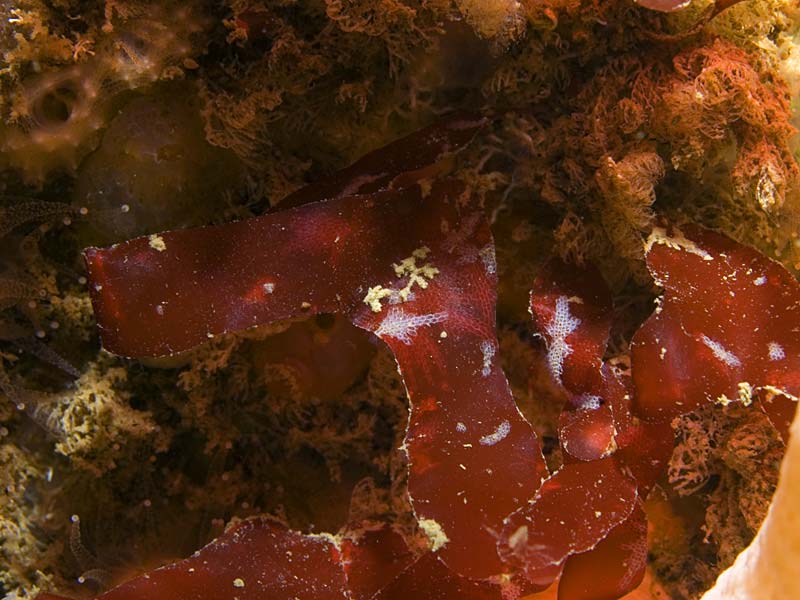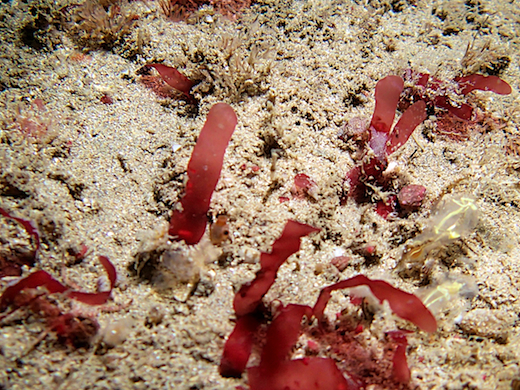Schottera nicaeënsis (J.V. Lamouroux ex Duby) Guiry & Hollenberg

Description: Plants to 60 mm long and 10 mm wide arising from creeping stolons via a short stipe that quickly expans to form flat papery, once or twice widely bifurcating, thin blades. Older plants form apical tendrils in August and September that reattach and form new soloniferous growths from which new blade start to arise the following year, generally in January. Reproduction is very uncommon and only terasporangial plants have been found on a single occasion in Britain in January; tetrasporangial sori are formed in catenate series on the surface of new blades less than 10 mm in length.
Habitat: Epilithic in lower intertidal rock pools and in the subtidal to 15 m, often ramifying in sponges such as Halichondria.
Distribution: Generally of western distribution in Britain and Ireland, from Shetland to Scilly Isles, and Channel Islands. Europe: Mediterranean, Portugal, Spain and France. Perhaphs intoduced into Chile, South and south-west Africa and Australia, although reports may represent other species of the genus; Mediterranean and Atlantic populations are also likely to represent two separate species. Surprisingly common in the subtidal in some areas such as North Devon and the south and north-east coasts of Ireland.
Similar Species: Phyllophora sicula; Rhodymenia pseudopalmata; Stennogramma interruptum.

Photographs: top: Rathlin Island, Co. Antrim, Northern Ireland. 20 m depth. 7 June 2006, Northern Ireland © Bernard Picton, Ulster Museum; bottom: East of the Skerries, Portrush, Co. Antrim, Ireland; August 2013 © Francis Bunker





